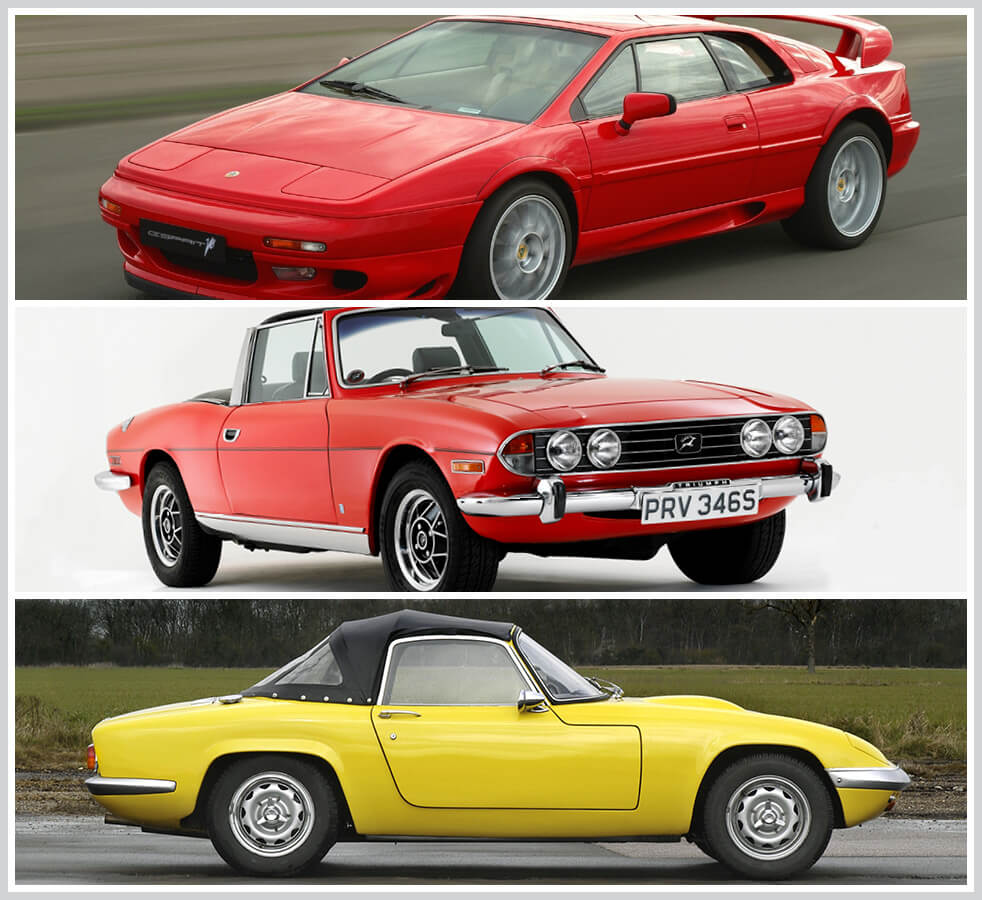
A 1967 Chevrolet Chevy II Nova is a cool-looking custom V8 machine that represents the era of custom cars quite well. You can take a closer look at this car to learn about it. Call today for a test drive. Here are some fun facts about the car.
1967 Chevrolet Chevy II Nova
From 1962 to 1988, five generations of the Chevrolet II/Nova were produced. The 1967 model was the final year of the second generation. It was also the subject of a major restoration in 2012. The vehicle is now a legitimate retro muscle car. A GM 6.0L LS-2 crate motor produces 400 horsepower and has a mild performance crank and tube headers. A 6-speed Tremec manual transmission delivers torque to the rear wheels via a GM positraction differential with an 8.5" ring. HD axles and a 4.10:1 gear ratio make this a great driving machine.

5.3L (327 cid) V8
In 1962, Chevrolet offered four different power ratings for the 2.3L 327 ci small block engine. The base model produced 250 hp at 4,400 rpm and 350 lb.-ft. of torque at 2,800 rpm, while the next rung was the highest at 300 hp at 5,000 rpm and 360 lb.-ft. At that time, big block Chevy full-size cars were advertised with power-trim packages, so performance-minded buyers took note of the small block's high horsepower and torque output. It was 100 times lighter than big-block Chevys and earned the nickname "Mighty Mouse", among hot-rodders.
111-inch wheelbase
The 1968 Chevrolet Nova received a complete redesign to include a longer wheelbase (111 inches) and wider stance. The compact car featured a sporty, narrow hood/shorter deck proportions and a semifastback body. Chevrolet offered it in three sizes: two-door sedan, convertible and wagon. The car was named the Chevy II Nova and was marketed as the "Camaro sedan" during its era.
Super Sport (SS) package
The 1968 Chevrolet Nova SS model was a performance-oriented version that came with a SuperSport option. This package featured an SS badge and simulated hood air intakes. It also included a black-accented tail and grille. The base car came with a 295 horsepower, 350-cuin V8 motor and heavy-duty suspension. The SS version, a higher-performance Nova model, was equipped with a big-block engine rated to 375-bhp at 5600 rpm, and 415-lbft of torque at 3600 rpm.

Factory-fitted camping gear
The Chevy Nova Spirit of America edition features patriotic colors, special emblems, and other options. One of these options is the factory-fitted camping tent. Protect-O-Plate is also available. This is a great way to show pride in America. These vehicles are collector's pieces. These vehicles make wonderful gifts for all ages.
FAQ
What length is an automotive mechanic apprenticeship?
It takes three years to complete an apprenticeship as an automotive mechanic. This includes two years at school and two years working as an apprentice. The first year is spent learning all aspects of the trade, including theory, practical skills, and safety procedures. During this time, you'll also learn how to use tools safely and efficiently. After you have completed the first year of training, you will be able to spend an additional year on-the job learning different trades. These are also the times you can attend formal courses.
The last year of the program is dedicated to gaining certification and qualifications in the field. These include NVQs, which are obtained after passing industry-specific exams. You can also get HNCs (Higher National Certificates), that cover subjects such as customer service, business administration, management, and business administration. For those interested in pursuing certain trades, City & Guilds certificates are available.
How can I prepare myself for a mechanic apprenticeship
It is vital to be able to comprehend what you are doing. You need to understand the mechanics of cars and how they work. This way, you know where to start when you go on your first day at the garage.
Also, you need to know how fix simple problems, such as tires and lights that aren't working.
This should help you learn how to diagnose issues and repair them yourself.
Also, it is important to know how parts fit together so that you can put them back together.
And finally, you must know how to use tools safely and efficiently.
These things will enable you to be a competent mechanic.
What is the job description for a mechanic in a car?
Three main areas of employment are available for car mechanics:
-
Automotive repair shops
-
Dealerships
-
Independent garages
Automotive repair shops
Most people think of this as the first step to becoming a mechanic. This is the best way to get started. You have two options: work in an existing shop or open your own.
If you are interested in working at a shop you will need to apply for membership to a union. Once you're accepted into the union, you'll receive training from the union.
You'll be ready for work once you have completed the training.
If you decide to open your own garage, you'll need to register with the government. Once you have registered, certain standards will be enforced.
After you have registered, you will be issued a license to operate your garage.
Your license allows for minor repairs and spare parts sales. It won't permit you to fix serious engine problems.
As well as selling spare parts you will need to offer advice and direction to customers.
Dealership jobs
Many dealerships have mechanics who are experts in one particular area. For example, they might only deal with brakes or only replace tires.
Some dealerships have the option to hire general mechanics who can take care of all aspects.
Some positions require that applicants complete training before they can be allowed to work. This allows employers to pick the right candidates for their jobs.
Some dealerships will hire graduates straight from college. These graduates have no difficulty learning about cars because they already know the basics and principles of mechanical engineering.
Independent garages
Independent garages aren't associated with any particular dealership. Instead, they focus on high-quality customer service.
Independent garages are not associated with any companies so they can afford higher wages. This means that these jobs are usually more lucrative than those at dealerships.
Independent garages don't necessarily make for better work environments. Many business owners prefer to be in control of their businesses than to delegate it to employees.
You might find yourself working long hours but having no control over what happens in the day.
It is also possible to expect lower wages than you would if working at a dealer.
You can switch jobs easily. If you want to work at a dealership, then you simply need to ask your current employer if he would consider hiring you as a mechanic instead.
If you prefer to work in an independent garage, you might consider applying directly to its owner.
The bad news is that finding a new job isn't always easy. There are plenty of other factors that influence how much you earn.
You might also consider the vehicle type you repair, and whether extra labor is charged.
What does it take for a mechanic to be a good one?
You need to have years of experience and practice before you can become a master mechanic. You can learn the most effective way to fix cars by learning from a professional mechanic.
You will have to spend time in a garage learning about cars and mechanics. You'll need to study mechanical engineering books on mechanics and car design.
Additionally, you will need to attend an auto school.
The most important thing is to start early. Do not wait to learn automotive technology. You can get certified as a mechanic by getting started right away!
Statistics
- There were 749,900 jobs available for automotive service technicians and mechanics in 2016, which is expected to grow by six percent through 2026. (jobhero.com)
- The U.S. Bureau of Labor Statistics (BLS) reports that the job outlook for automotive service technicians and mechanics is expected to decline by 4% from 2019 to 2029. (indeed.com)
- Apprentice mechanics earn significantly less hourly than mechanics who have completed training, with a median wage of approximately $14.50 an hour, according to PayScale. (jobhero.com)
External Links
How To
How to be an Automotive Technician
A technician who works on vehicles is an automotive technician. He/she can be found at auto shops, garages and service centers. He/she helps customers fix their cars, trucks, motorcycles, ATVs, boats, lawn mowers, snowmobiles, tractors, trailers, farm equipment, planes, helicopters, jet skis, watercraft, bicycles, motorcycles, scooters, golf carts, etc. An automotive technician must be able to diagnose problems and make repairs quickly, safely, accurately, and efficiently.
If you want to be an automotive technician, you need an associate degree from vocational school. After completing the program, he/she must take the National Institute for Automotive Service Excellence certification exam. ASE stands as American Society of Mechanical Engineers. There are two parts to the ASE certification exam. The first section tests your mechanical skills, while the second tests your practical knowledge. You must attend one of the authorized testing sites to take the test. These testing sites can be found online and through your local dealer.
After passing the test, a candidate must pass an examination in order to be licensed as an automotive technician. This process varies depending on where the applicant lives. Some states require that applicants attend a training class, while others allow them freedom to study at their own pace. Some states permit technicians to work immediately after they are granted their license. Others require them to wait at least six consecutive months before they can be licensed.
To become an automotive technician, one must apply at a local dealership. New employees are usually apprentices when they first get hired. Apprenticeship programs typically last three to four years. A student will learn to repair basic things like changing oil, adjusting brakes or replacing tires. They also learn how spark plugs are cleaned and inspect engine compartments. Advanced repairs can be done by some students, including replacing shocks, installing air filters and repairing engines. Many schools offer classes during regular hours. Some schools also offer evening classes, if necessary.
After completing an apprenticeship, a student becomes a journeyman. Journeymen typically spend four to five years learning how to install major systems, such as transmissions, differentials, steering gear, suspensions, and drive shafts. They learn how to do complex repairs such as remanufacturing engines, rebuilding transmissives, and troubleshooting electronic components. Employers prefer to hire journeymen as they are familiar with the job and can anticipate customer needs.
A candidate who passes all the necessary exams and gets a license might be interested in opening his/her own business. The Bureau of Labor Statistics estimates that there were nearly 1.7 million jobs available for automotive mechanics in 2010. This number is expected to increase by 18% between 2009 and 2020. The candidate should expect to invest thousands of money in equipment and supplies if he/she decides to start his/her shop.
Many factors affect the automotive technician's salary, including location, education, experience, and employer type. A jobless person could make an average of $20,000 annually. An individual with a high school diploma can earn about $21,000 per annum. An associate's degree earns approximately $24,000 annually. A technician with a bachelor's degree earned approximately $27,000 annually. And those with master's degrees made around $32,000 per year. Salary increases can be common. A professional who earns less that $30,000 today could reasonably expect a $40,000 increase in the next few decades.